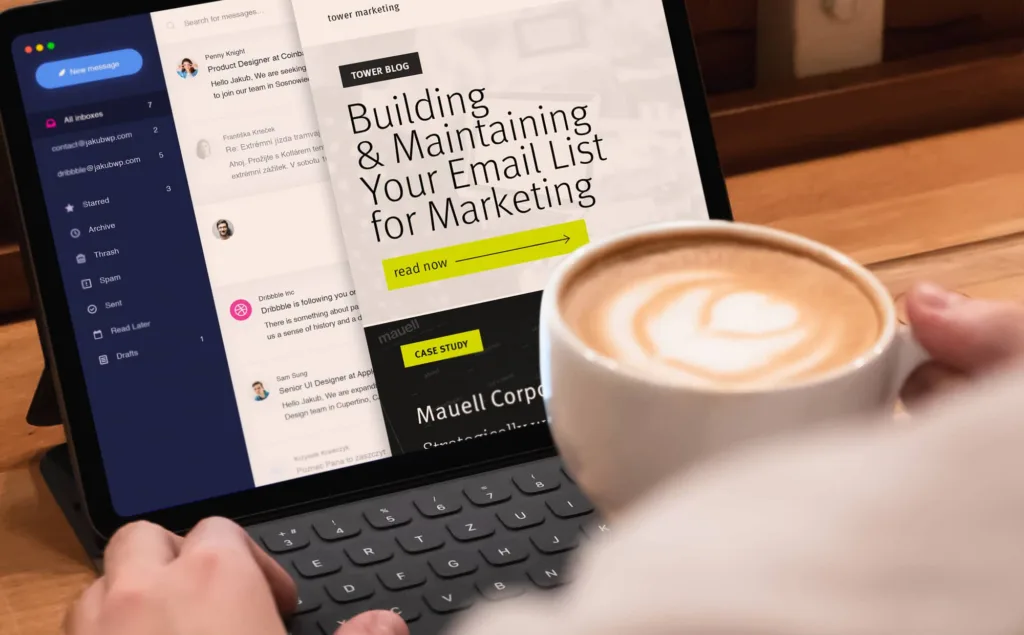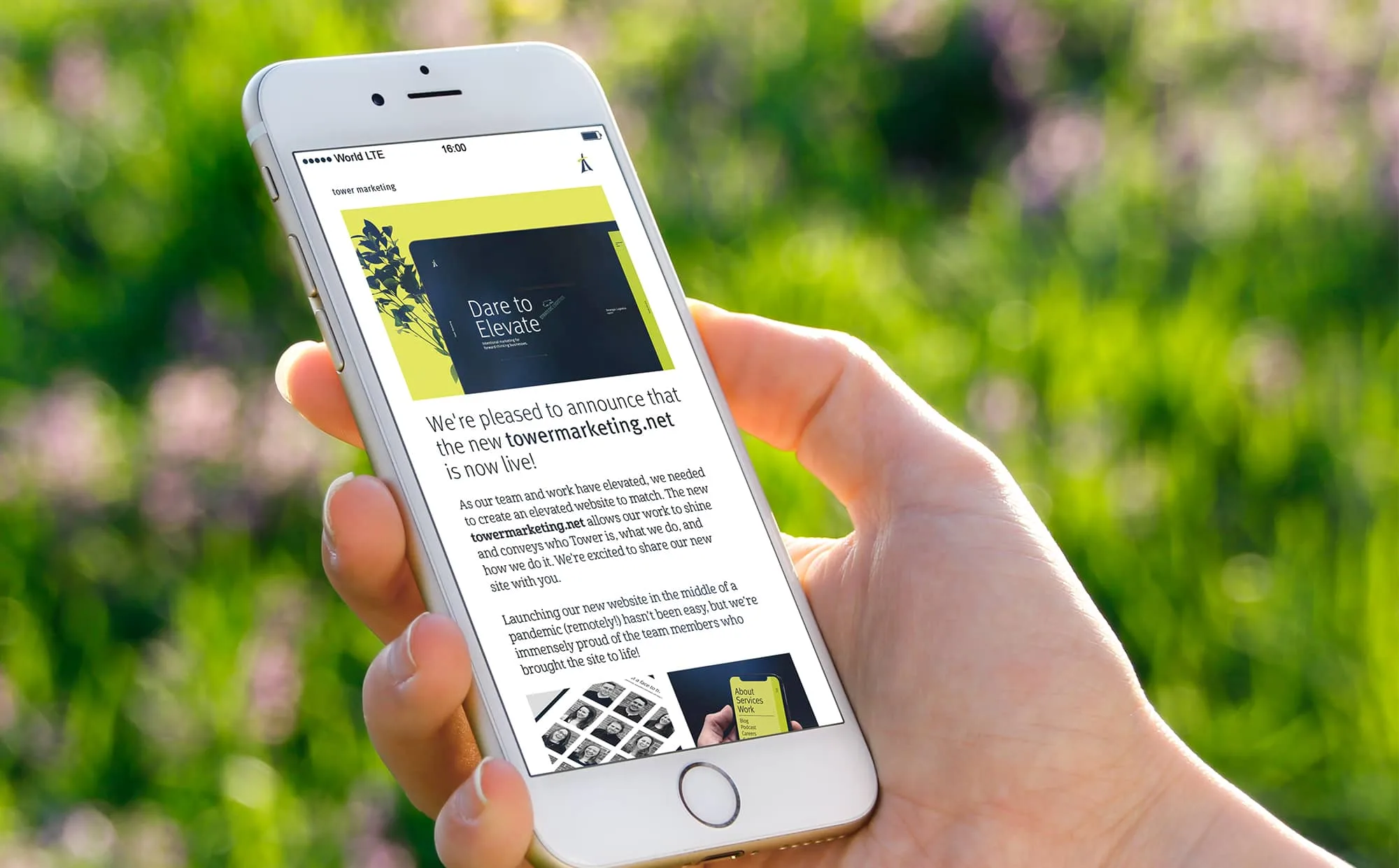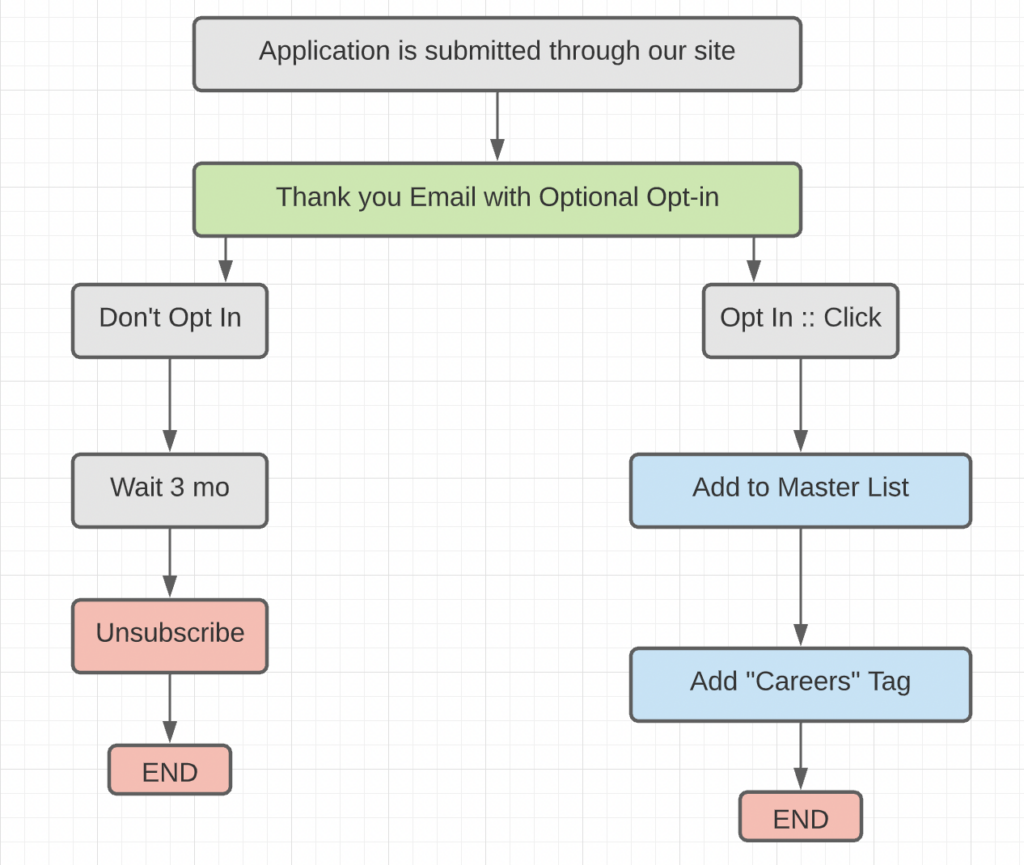Getting Started with An Email Drip Campaign
- Email Marketing & Automation
- Marketing Strategy

The world of email marketing has changed since the days of blindly blasting your email list with company updates and promotions. We’re learning to work smarter, not harder, by using new tools and customer data to make sure our messages get to the right people at the right time.
This is where email drip campaigns come into play. These campaigns save you time and allow you to connect with your audience when it matters most. These campaigns do not have to be complicated and work for a variety of business sizes, industries, and marketing goals.
What is an Email Drip Campaign?
Email drip campaigns (also known as automated email campaigns, lifecycle emails, autoresponders, and marketing automation) are email campaigns that go out on a schedule or deploy based on a trigger event or customer action.
As a consumer yourself, you may have received a welcome email when you signed up for updates from a company or if you put an item in your virtual shopping cart and left the site before purchasing. Both are examples of drip campaigns in action. Others may include emails with specific information when you visit a website without taking action or follow-up emails after a purchase or event registration.
How Are Drip Campaigns Different?
What sets these emails apart from campaigns of the past is the ability to send them at a point in time that matters most to your customers or prospects. Rather than manually sending an email to confirm a purchase, we can now set up an automated email that triggers when a purchase is made.
Instead of scheduling time during your busy day to send a welcome email to all contacts who signed up in the past week, we can create a welcome series that starts as soon as the form is submitted. When your customers are thinking about you, you are getting a front-row seat in their inbox.
Beyond the time savings and convenience, targeted emails can impact your ROI and overall email performance. Popular email platform Emma did research showing that relevant targeted emails produced 18 times more revenue than non-targeted, batch-and-blast emails. They also showed those who opened targeted emails are more likely to click links in them, with a 119% increase in click rate.
When to Use a Drip Campaign?
The versatility of drip campaigns makes them valuable for a variety of businesses ranging in size, industry, target audience, and goals. The following email drip campaign ideas may be applicable to your business.
Welcome Series
For some subscribers, their first interaction with your email marketing program could be through a drip campaign commonly referred to as a welcome series. This series introduces the new subscriber to your company, giving them more background on who you are and what you do.
It can also help to validate their subscription, build your email reputation, and verify them as a strong, engaged contact. Typically, they are triggered by a user filling out a form on your website opting in to receive updates from your company.
Lead Nurturing
Similar to the welcome series, a lead nurturing drip campaign can help introduce a potential prospect to your company, giving them useful information at different points in their decision-making process.
A series like this is helpful for business-to-business applications where a potential client may request information about your company via an online form but maybe months away from making a commitment to work with your company. At key points along their journey, you can contact them with relevant information or prompt them to reach out to you to proceed with the next steps in the process.
Cart Abandonment
If you have an online store, you may have run into this scenario before. Say someone is browsing the products on your site and finds one they like enough to add to their cart. Whether it’s an internal or external force, they leave your site, also leaving that product just sitting in their cart.
A cart abandonment series is a powerful follow-up tool that reconnects with those potential customers. Messages could incentivize them to check out with a deal or coupon code, add urgency with an alert that the product is almost out of stock, or simply remind them of your brand and the awesome product that awaits them.
Product or Content Recommendations
Marketing automation can be set up to keep in touch with your customers and recommend products, services, and content that may be of interest to them based on past purchases or site behavior. Emails in this series can be set up to deploy a certain amount of time after their last site visit or purchase date to help keep you in mind.
Date-Based Touchpoints
Want to wish your customers a happy birthday or mark an anniversary? Drip campaigns can be set up based on these dates when they are provided by the subscriber. This type of email can be sweetened with a coupon or promotional code to mark the occasion and encourage a purchase.
Confirmation Emails
When hosting an event or requiring customers to make a reservation, email drip campaigns can play a role in sending confirmation emails upon sign up. Much like a welcome series, these campaigns can work with website forms and deploy emails as soon as an event registration is placed. As the event approaches, automated emails can be sent with more event details and reminders.
Reengagement Emails
Subscriber habits change over time. There may be a time where a segment of your subscribers stops engaging with your messages. Their needs could have changed or content featured in your newsletters may not be relevant to their life at that moment.
Reengagement campaigns can help you reconnect with this segment of subscribers. These automated emails reintroduce you to that unengaged segment and can prompt them to either stay subscribed or unsubscribe. Encouraging people to unsubscribe may feel counterintuitive, but in the long run, this will help your list health and analytics. When you continue to send to inactive or unengaged contacts who continue to not open or click links in your emails, your open rates and click rates will fall. Sending to a smaller number of engaged contacts can result in increases in both open and click rates.

Setting Up an Email Drip Campaign
Many email service providers, like MailChimp, ActiveCampaign, and Hubspot support automated campaigns. Each one may have a specific way to set up an automated campaign but across the board, it’s important to consider your goals and use a workflow to understand the steps needed to make your campaign successful.
Before you get started, consider the following questions:
- What is your goal?
- What action do you want your subscribers to take?
- Who will you be targeting with this automation?
- How does the user enter the automation? What is the trigger event?
- How will users exit the automation?
By addressing these questions, you will get a sense of how the automation will begin and how many emails to include in your drip campaign. It will help to shape the workflow by creating a starting point and an ending point.
Using a flow chart like Lucidchart or simply sketching it out on paper can help you create the steps and logic needed to move subscribers from start to finish. A drip email campaign workflow may look like this:

This automation begins with an applicant submitting an online form. After they submit the form, an automated email is sent thanking them for their submission and asking if they would like to opt-in to receive more information.
If they click the opt-in button in the email, they are added to the master email list and receive a tag designating their interest in “career” information. If they do not click the opt-in button, the system waits for three months, then unsubscribes them since they do not wish to receive information in the future.
Measuring Email Drip Campaign Success
When measuring the success of email drip campaigns, many of the usual email marketing KPIs will also be relevant as key indicators of success. Tracking both open rate and click-to-open rate on the emails associated with your automation can give you a gauge of how effective your message is.
Also selecting an email drip campaign KPI that aligns with your main campaign goal will help you gauge if the campaign is performing well. For example, a cart abandonment automation goal could be to capture a percentage of those abandoned carts through the customer following through with the purchase they started.
Need help with your email drip campaign strategy? Learn more about our email marketing services to get started.
 By Danae
By Danae